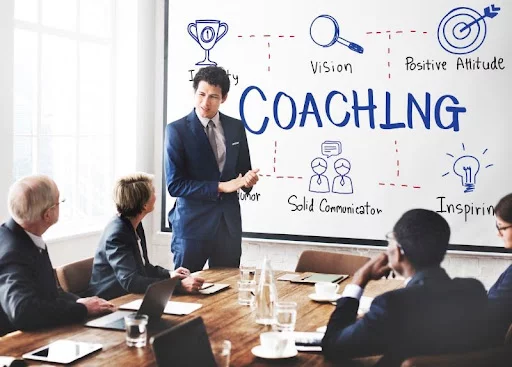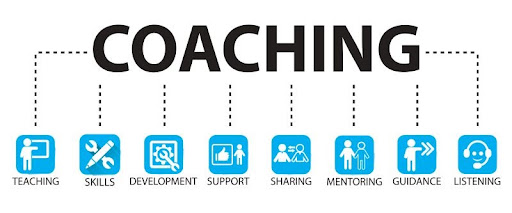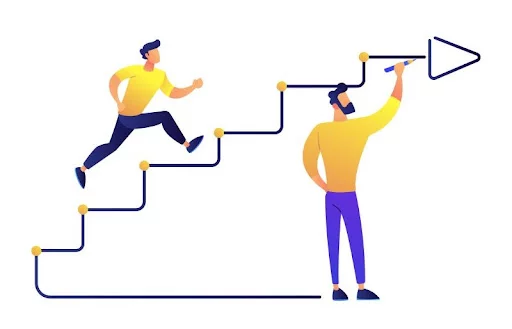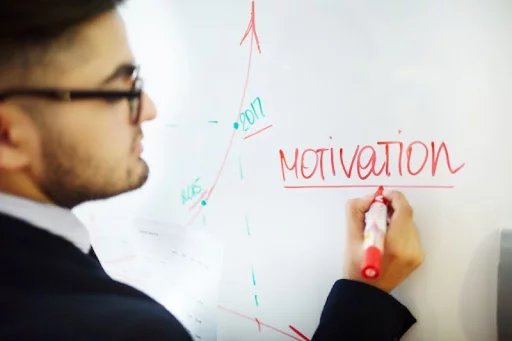
The meaning of coach: what does a coach do and what is the coaching process?
The meaning of coach is still unclear to many people, despite the growing popularity of coaching in our country. In this article, we will explain what coaching is, what to expect during a coaching process, what a coaching session and process looks like, and what results can be achieved.

The meaning of coaching and coach
Coach originally meant coach, and the term entered the European public consciousness in the 1980s, following Tim Gallwey's highly successful book The Inner Game of Tennis. The point of the book is that what goes on in the players' heads is as important as what happens on the court. A good coach should focus not only on physical performance but also on mental preparation. The principles of coaching can be applied not only in sport, but in any other area of life.
A coach in current usage is a kind of mental personal trainer whose goal is to help his or her client (coachee) to get the most out of themselves. There is therefore a real similarity with the term coach as used in sport:
- The coach needs to discover the strengths, weaknesses and stumbling blocks of the client
- Based on these, you need to plan the phases of preparation
- You need to gather the methods and tools that can help the client
- It should support the client in making the best use of its internal resources
- Of course, implementation can also involve minor setbacks, in which case it is very important that the coach is able to help the client through the difficulties.
The meaning of coaching
Coaching is the process where the coach and client work together on a problem brought by the client. The aim of the process is to solve a specific problem or achieve a set goal. However, it is essential that the solution is not the coach's to invent and implement, but the client's, and the coach only provides guidance, motivation and inspiration, as well as ongoing support throughout the process.
Coaching is therefore not the same as counselling, nor is it the same as psychotherapy. In counselling, the counsellor helps the client with concrete ideas for implementation, while psychotherapy is about solving psychological problems and working through the past.
Areas of coaching
The two basic areas of coaching are life coaching and business coaching. Today, the two main areas are divided into several sub-areas, for example, within business coaching there is executive coaching, team coaching, agile coaching, career coaching, etc.
To find out more about the development and areas of coaching, read Coaching: focusing on personal development article!

What tools does the coach use to help?
A good coach selects from a wide range of methods and tools in his work, the choice of the right tool should always be adapted to the individual needs of the client. The best known and most widely used coaching tool is the GROW model, which divides the coaching process into 5 phases. During each phase, the coach guides the client to achieve the goal by asking supportive questions. We have already written about the GROW model in a separate article.
In addition to the GROW model, there are a number of other tools that can be imported from other disciplines, such as psychodrama, various personality tests, or business assets.
What results can be achieved through the coaching process?
The coaching process always aims to achieve a specific objective. However, during the process, on the one hand, negative thoughts and barriers related to the topic are revealed, and on the other hand, the client gains a lot of new techniques and problem-solving methods. As a result, the results of coaching can be experienced on 2 levels:
- The obvious result is that the set goal is achieved and the ideal state is reached
- The hidden result is that the client gains new experiences, methods and self-confidence, problem-solving skills that lead to qualitative improvements in all areas of life.

Phases of the coaching process
1. First meeting between the coach and the client
During the first session, the coach and the client get to know each other, and the problem to be solved is identified. This is also where we find out whether we have a common wavelength and whether the coach can help his client. The ground rules are discussed and how the coaching process will take place.
2. Identifying barriers, negative thoughts
The first step on the path to the goal is to identify the barriers and negative thought patterns that have prevented the client from achieving the goal. In many cases, these insights can reduce the fears and make them bearable, but the coach also offers methods and tools to overcome the obstacles.
3. Finding and evaluating alternatives
The possible paths that can be taken to solve the problem are identified. In this case, even alternatives that seem impossible should be collected, as they may still be feasible with minor modifications.
4. Single route selection, detailed planning
Among the alternatives collected, the one to which the client is able to give maximum commitment should be selected.
5. The implementation process
In this phase it is very important that there is a continuous follow-up and that the coach is always there to motivate and help the client through any difficulties that may arise.
Summary
A coach is therefore a kind of mental personal trainer who can help clients in any area of life to achieve their goals, deal with stumbling blocks and improve their performance. The coaching process is a development process consisting of several sessions and phases, at the end of which not only the desired goal is achieved, but the client also gains a lot of new tools and self-confidence.
Have a question? Contact us!
Are you unsure about what form of support could solve your problems? Read more about our coaching services here, or contact us!

 Designabc
Designabc